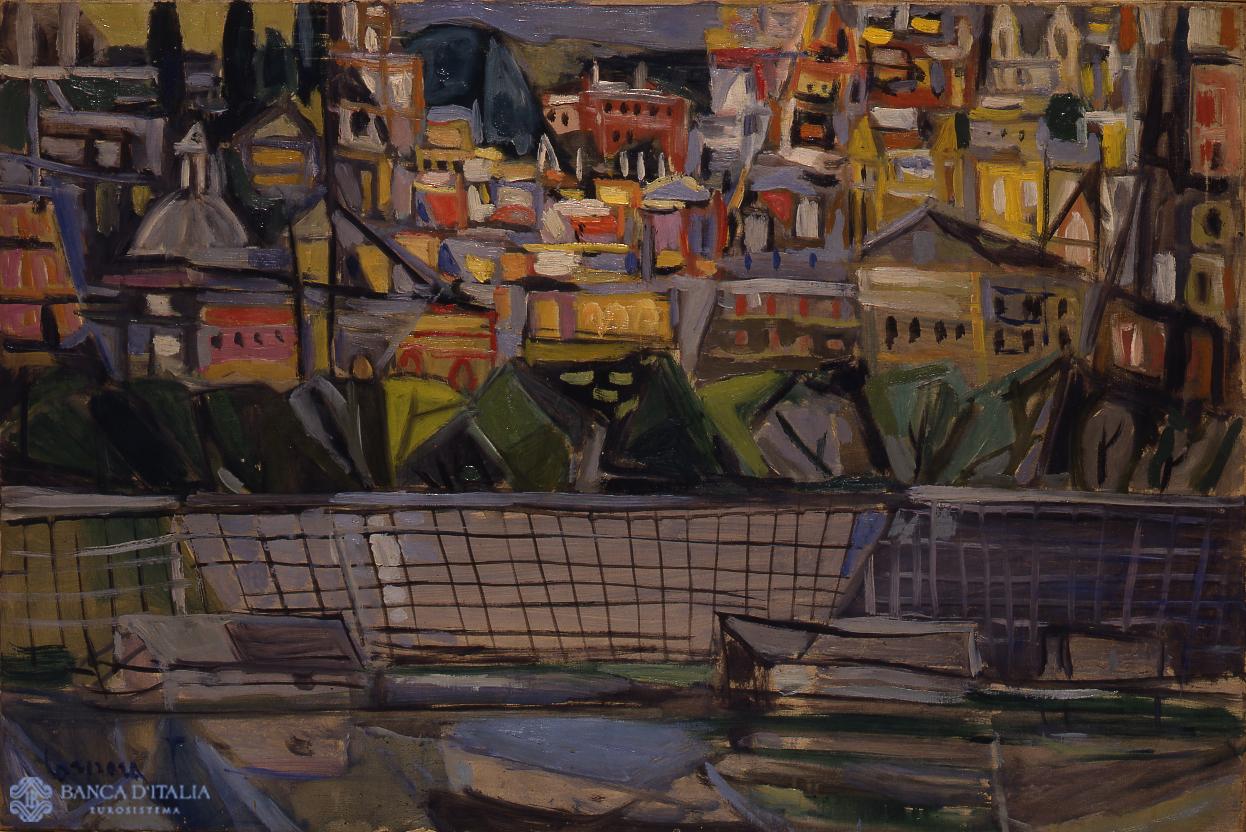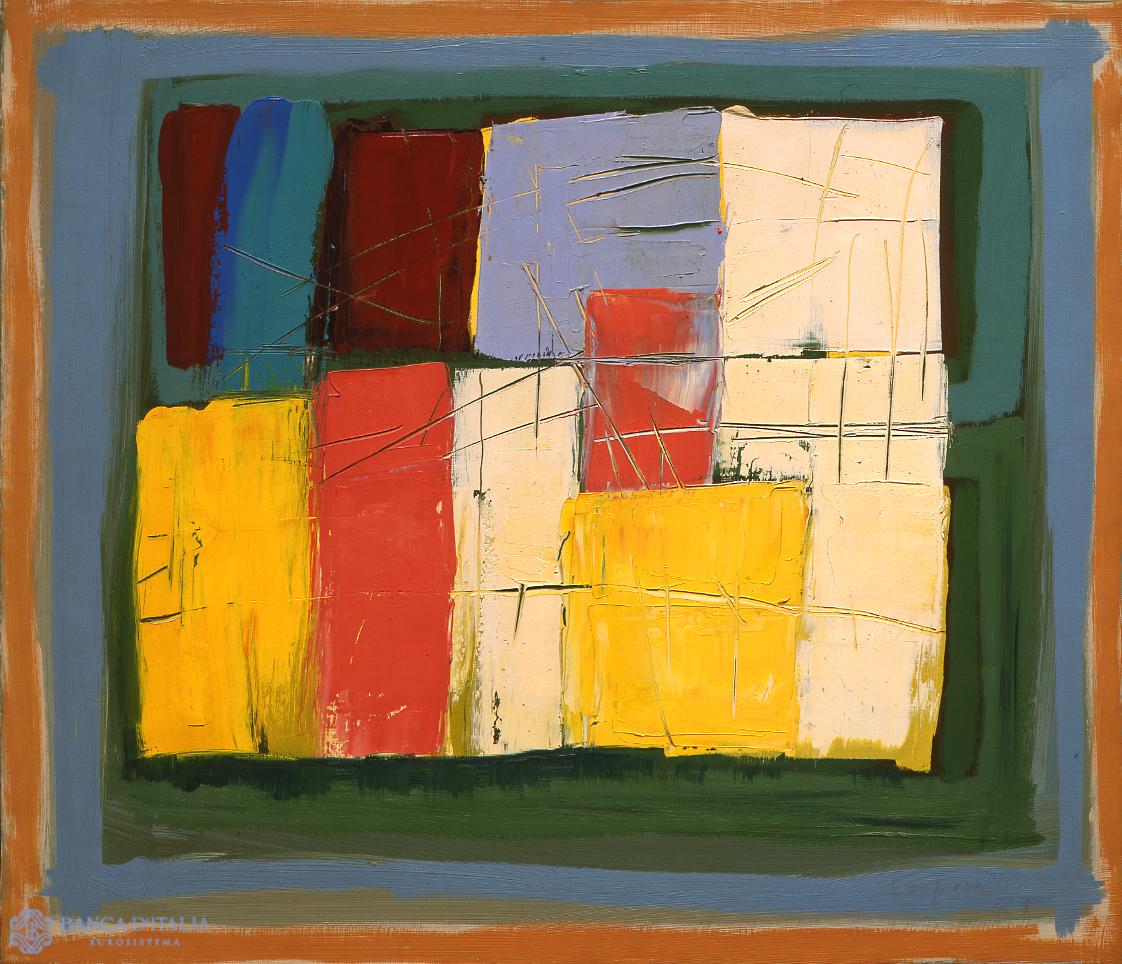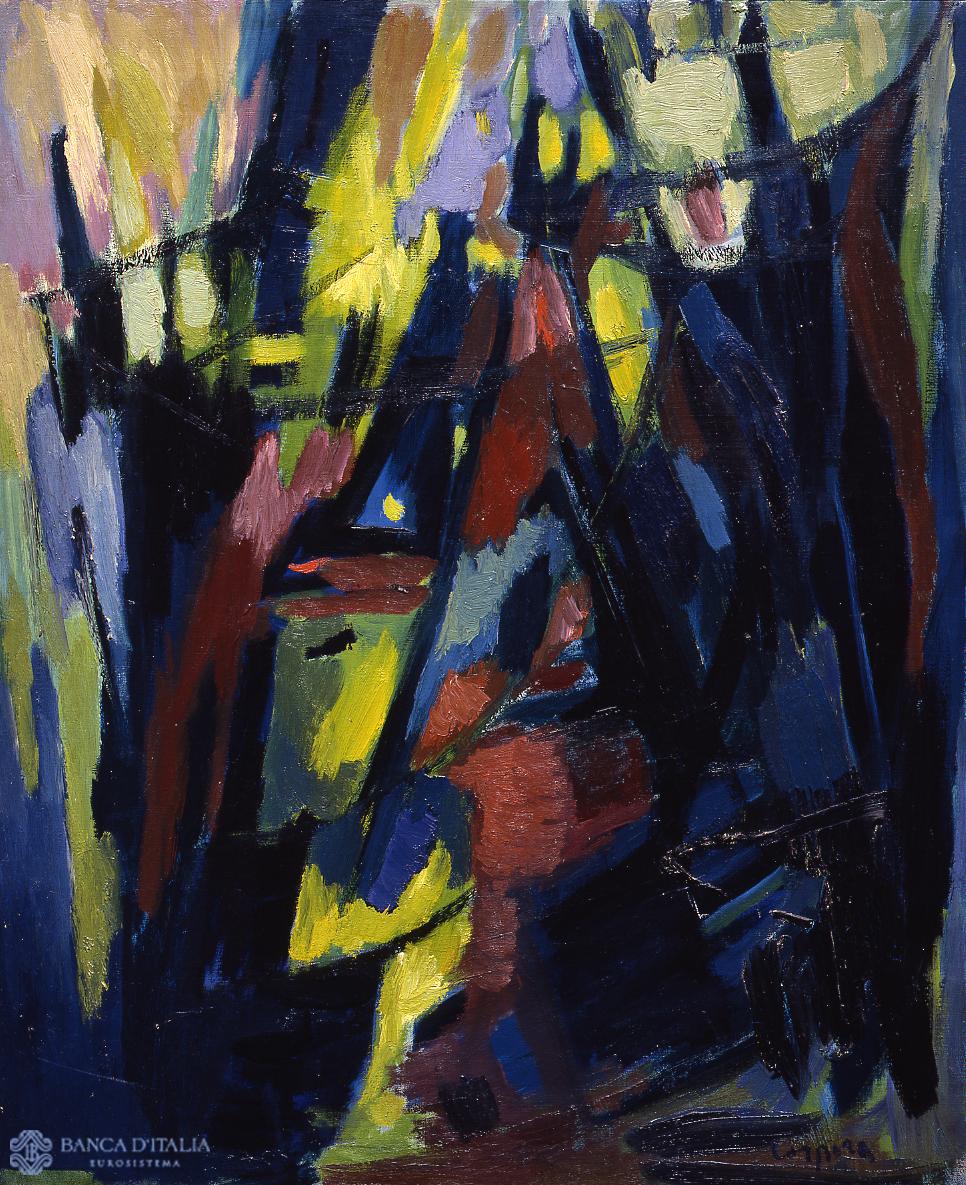Antonio Corpora was born of Italian parents in Tunisia, in 1909. It was there that he acquired the rudiments of painting, from a pupil of Gustave Moreau, Armand Vergeaud, formerly a friend of Matisse. He developed a deep attachment to the value of colour, at one with the great French modern tradition to which he would remain devoted for the rest of his long career.
At the end of the 1920s he moved briefly to Florence, before settling in Paris. There he became involved with the groups Cercle et Carré and Abstraction Création, practicing a concretist abstraction which at the time in Italy was lent credence exclusively by the Milanese Galley Milione, one of the artist’s favourite haunts when travelling and staying in Italy. He also frequently returned to Tunisia, where he spread the theories of his Lombard friends. From 1945 onwards he remained permanently in Rome, where he forged close ties initially with Guttuso, with whome he designed a Neo-Cubist Manifesto in 1946 that accompanied a collective exhibition at the Secolo Gallery, which in practice anticipated the poetics that soon afterwards would bind together the Fronte Nuovo delle Arti, in which Corpora was a leading figure.
He later joined the Group of Eight, unreservedly espousing their poetics of abstract-concrete art, as theorized by his friend Lionello Venturi. It was with them that he exhibited in the Venice Biennale in 1952. From 1948 onwards he often returned to Venice, exhibiting in rooms dedicated to his work alone in 1956, 1960 and 1966. It was at this time, moreover, that he took part in major international exhibitions (including Documenta Kassel) and showed his work broadly in the most prestigious private settings in Europe and America. A major retrospective was devoted to him in 1987 in Rome’s National Gallery of Modern Art.
Corpora died in Rome in 2004.
Antonio Corpora
Antonio Corpora (Tunisi 1909 - Rome 2004)
20th century AD

Compiler
Fabrizio D'Amico




